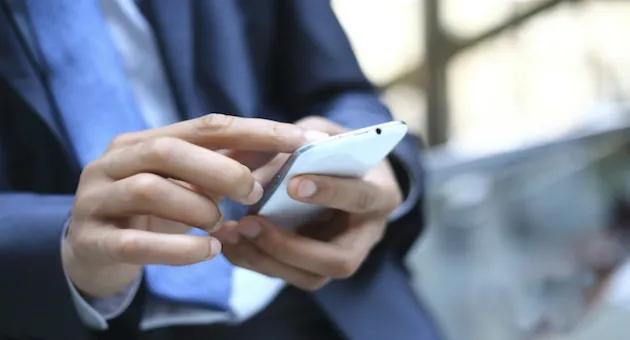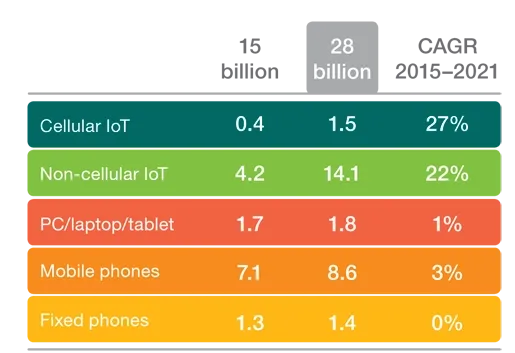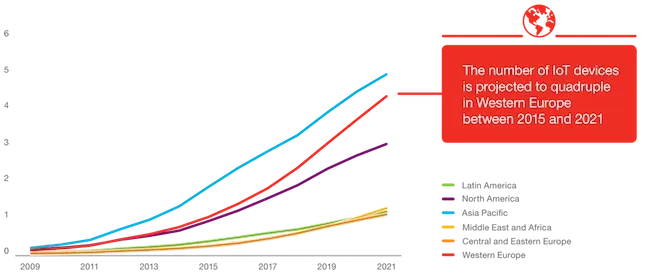Exaud Blog
Blog

Ericsson Mobility Report: IoT will surpass mobile phones by 2018
The latest edition of the Ericsson (NASDAQ:ERIC) Mobility Report, published today, reveals that the Internet… Posted onby Exaud
The latest edition of the Ericsson (NASDAQ:ERIC) Mobility Report,
published today, reveals that the Internet of Things (IoT) is set to
overtake mobile phones as the largest category of connected devices by
2018.

Connected devices (billions)
Image source: Ericsson Mobility Report 2016
Between 2015 and 2021, the number of IoT connected devices is expected to grow 23 percent annually, of which cellular IoT is forecast to have the highest growth rate. Of the 28 billion total devices that will be connected by 2021, close to 16 billion will be IoT devices. The report shows that despite Mobile phones still continue to be the largest category of connected devices, by 2018 they are expected to be surpassed by IoT, which includes connected cars, machines, utility meters, remote metering and consumer electronics.
Further, the report shows that within IoT, two major market segments with different requirements are emerging: massive and critical applications.
Massive IoT connections are characterized by high connection volumes, low cost, low energy requirements and small data traffic volumes. Examples include smart buildings, transport logistics, fleet management, smart meters and agriculture. Many things will be connected through capillary networks. This will leverage the ubiquity, security and management of cellular networks. Today, around 70 percent of cellular IoT modules are GSM-only. Network mechanisms are being implemented, resulting in extended network coverage for low-rate applications. Additional functionality will allow existing networks to support different device categories, and enable prioritization of devices accessing the network. Network systems improvements such as sleep mode will support battery lifetimes beyond 10 years for remote cellular devices.
Critical IoT connections are characterized by requirements for ultra-reliability and availability, with very low latency. Examples include traffic safety, autonomous cars, industrial applications, remote manufacturing and healthcare including remote surgery. Today, LTE’s share of cellular IoT device penetration is around five percent. Cost reductions will make LTE-connected devices increasingly viable, enabling new, very low latency applications. This will be achieved by reducing complexity and limiting modems to IoT application capabilities. Evolved functionality in existing LTE networks as well as 5G capabilities is expected to extend the range of addressable applications for critical IoT deployments.
Between 2015 and 2021, IoT connections are expected to grow with a CAGR
of 23 percent. Over that time, Western Europe will add the most
connections, led by growth within the connected car segment. A connected
car is counted as one device, though it may have hundreds of
sensors.

IoT connected devices: cellular and non cellular (billions)
Image source: Ericsson Mobility Report 2016
The full Ericsson Mobility Report, Traffic Exploration Tool and regional reports for North America, South East Asia & Oceania, India (published June 7), and North East Asia (published at a later date) can be downloaded at www.ericsson.com/mobility-report
Article source: Ericsson Mobility Report 2016
Related Posts
Subscribe for Authentic Insights & Updates
We're not here to fill your inbox with generic tech news. Our newsletter delivers genuine insights from our team, along with the latest company updates.